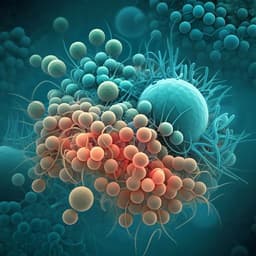
Chemistry
A stable and strongly ferromagnetic Fe₁₇O₁₀ cluster with an accordion-like structure
L. Geng, X. Yu, et al.
This research dives into the gas-phase reactions of iron clusters with oxygen, revealing that while larger clusters react with O₂, smaller ones do not. Notably, Fe₁₇O₁₀ showcases remarkable stability and a unique accordion-like structure, along with strong ferromagnetic properties, suggesting exciting applications in high-density storage and spintronics. Conducted by Lijun Geng, Xiaohu Yu, and Zhixun Luo.
Playback language: English
Related Publications
Explore these studies to deepen your understanding of the subject.







